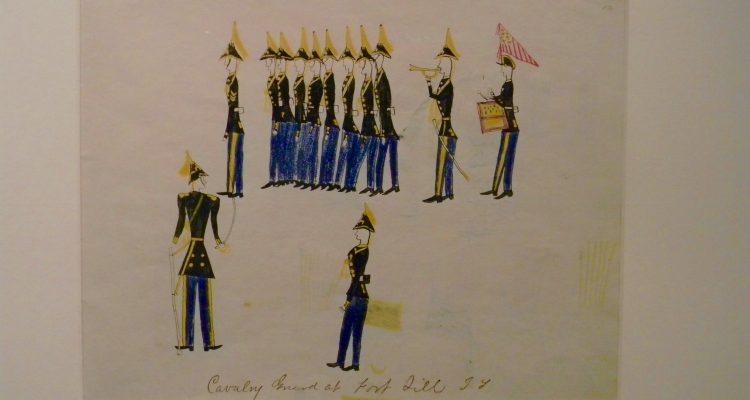It’s often understood that artists aim to tell a story or send a message through different pieces; however, what isn’t always appreciated is the ability artwork has to preserve history. The Fairfield University Art Museum currently houses a unique collection of Ledger Drawings, aimed at educating both students and faculty about the importance of historical art and the meaning behind it, and is located in the Bellarmine Hall Galleries. In an exhibition entitled, “Picturing History: Ledger Drawings of the Plains Indians,” Fairfield hopes to promote diversity while sharing a bit of history to its audience.
“Even though our permanent collection is very small, we have a lot of holes in terms of trying to represent different cultures and time periods from around the world, our exhibition program really does try to range far and wide,” said Frank and Clara Meditz Director and Chief Curator of the Fairfield University Art Museum, Linda Wolk-Simon. “I’ve seen these drawings and have encountered them in different places for the last few years, and each time I come across them I think they are magical and I think they are so interesting.”
According to the Fairfield University Art Museum website, during the second half of the 19th Century, artists from the Plains Indian Peoples produced drawings and paintings that depicted battles, rituals and happenings of everyday life. Pieces that are on display in the Bellarmine Gallery include colored pencil, graphite and watercolor work that show a balance between different battles and basic life events. Ledger drawings are known for both their color, line work and also for their unique quality of being drawn on pages of account books — they essentially look like something one might draw on the inside of a notebook. One interesting aspect that stands out the most in the Ledger Drawings is their ability to show movement. Within each image, the viewer can tell the movement of soldiers, horses or lay people. The pieces all have nice flow and their rhythmic quality emphasizes the fact that they actually tell a specific story, rather than merely show an image.
“I think this exhibition tells a really beautiful story,” said Katie Duncan ‘18. “The fact that they used this artform to record their history, it came from ledgers, and instead of using written words they used images. I think that’s so much more interesting than using written words because it gives us a better idea of what was actually going on in the world and in their minds during this time period.”
When viewers observe the Ledger drawings, they’ll notice the keen attention to detail each artist paid. Their careful use of color is not only vibrant and beautiful, but it also is used to strategically highlight certain characteristics within a scene. For example, in the piece entitled “Sioux Medicine Men,” there is an abundance of color to show different details such as showing each “medicine man” riding a horse with elaborate jewelry, tattoos and headdresses. The artist also included a red sash on each of them and on the tail of the horse. Careful detail of color and line choice represents what was important to the Plains Indians during the later half of the 19th Century.
“You can definitely conceptualize what Native Americans deemed important at the time of these pieces. They show animals being a lot larger than humans, so you can see what they viewed and valued through their artwork,” said Sean Stiso ‘19.
Wolk-Simon explained that due to the opportunity she had to meet and collaborate with Donald Ellis — an international dealer in the field of historical Native American art — Fairfield was able to make this exhibition possible. According to Wolk-Simon, Ellis was an enthusiastic collaborator and due to the fact that he knows what the “great” works are, he was able to bring this exhibition to life and showcase the beauty in historical art.
“I think the impulse to chronicle one’s life, like artists have always wanted to do — they’ve always wanted to represent grand historical battles, history, myth, domestic life, daily events — this impulse of an artist to draw and to depict things that become history I think is really universal,” said Wolk-Simon.
The exhibition, “Picturing History: Ledger Drawings of the Plains Indians,” will be on display in the Fairfield University Art Museum at the Bellarmine Galleries until Dec. 20. 2017.


Leave a Reply